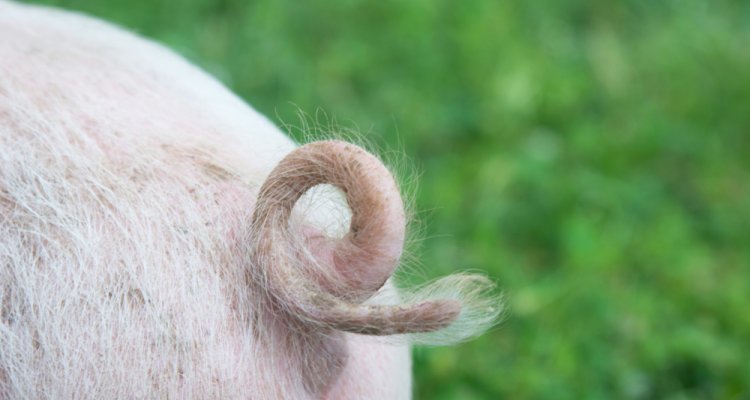
News
Curly tail of a pig demands fee of 10-31 euros
Dutch pig farming wants and needs to stop docking pigs' tails. In current practice, tails are docked in most piglets to prevent animals from biting each other's tails. Tail biting can lead to wounds, abscesses and causes prolonged pain and stress. Pig farmers want to prevent this at all times. It is a multifactorial problem which cannot be solved with the push of a button.
To stop tail docking and minimise the risk of tail biting, pig farmers need to make adjustments in several areas. For example, adjusting the barn (pen layout), barn climate and feed. Additional labour and craftsmanship are also required. The extra costs of keeping pigs with uncut tails vary between €9 and €26 per delivered pig. However, costs can vary widely from farm to farm.
Compensation needed
Even in favourable conditions, tail biting takes place. It is assumed that 5-15% of delivered uncut pigs will suffer damage to their tails and not qualify for possible compensation from the buyer. This could be paid out for pigs whose tails are intact. Therefore, the yield of pigs whose tails are in good condition should cover the additional cost of all animals delivered. For the yield of a pig with its tail intact to remain profitable, the buyer of an animal must start paying 10 to 31 euros more for a pig with its tail in good condition. A large proportion of farms are expected to face costs at the upper end of this range; therefore, a required fee between 17 and 31 euros per pig with tail in good condition is recommended.
Added to this is the fact that pig farmers will need several years to learn to deal with pigs with curly tails. This is evidenced by experiences at home and abroad. The compensation per pig in the first few years should therefore be another EUR 3 higher than the stated compensation of EUR 10-31 per animal delivered.
This emerges from research by Wageningen University & Research commissioned by the Coalition Vitale Varkenshouderij (CoViVa). It examines the question of how pig keeping with a curly tail (i.e. without docking) can be made possible, from the perspective of the chain approach. The results are based on model-based calculations, using literature and interviews for the assumptions. WUR calculated some scenarios of farms that vary in initial situation in terms of housing and management.
Further recommendations
In the pioneering phase, a link with the Better Life label is desirable. It is also desirable to work on a level playing field (equal requirements) within the EU.
Even with appropriate housing and good management, pigs will occasionally bite each other's tails. This is proven by the experiences of pig farmers at home and abroad. However, a calamity fund to cover large damages seems to have little support among pig farmers. These prefer an extra compensation to take care of this themselves in case of calamities.
In 2008, the European Commission (EC) banned routine tail docking. Thereby, docking is allowed if it is not possible to prevent tail biting on farms. However, this exceptional situation is common practice on most pig farms given the complexity of the issue. That is why the EC put the topic of tail docking on the agenda again in 2013.